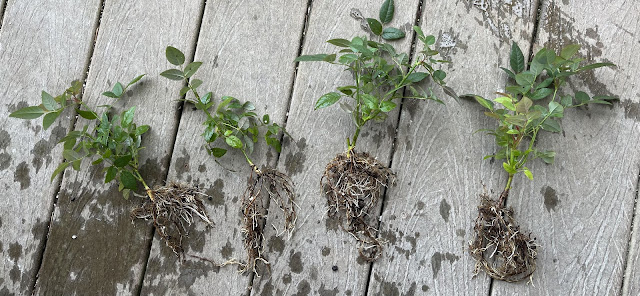First the yellow jackets. They can destroy a fig crop overnight, and often do, if I don't bate and trap. They send out scouts, who return to the nest with news of a feast. Figs have to ripen on the trees - it's the only way to have sweet, flavorful figs. Just when beginning to ripen, they find the figs and destroy them, eating from the inside out, They are also vicious, and hazardous to be around.
I'm hoping that by beginning now, I can mitigate this year's yellow jacket invasion. According to Oregon State Extension, Spring elimination of queens can greatly limit the population,
Today, I disassembled and cleaned the yellow jacket traps in the fig grove where I pruned and cleaned up yesterday.
The trees are coming out of dormancy. Looking at my older blog posts, now is about the usual time. Breba figs that overwintered are starting to grow, and tip growth is beginning. Shown are White Sicilian, Carini, Petite negri, Lattarula, and LSU Tiger in that order. (I should add, there has bern a lot of discussion on line about the true identity of figs that look identical to this variety, and that have the same leaves and growth habit. There seem to be more fig hobbyists who consider it Violette de Bordeaux. Also, the original seller is calling it that. Going forward, that may be my name for it as well. )
Now some TLC for that little, 2-Year old, Hardy Chicago tree in the same row. The perennial grasses take over close to the trunk. I imagine for such a tiny tree, that's inhibitory for growth. I cleared what I could, then added a couple layers of cardboard. It will decompose in a year or so. Meanwhile, it will kill the grasses under it and maintain soil moisture.
The cardboard can catch wind like sails. A good covering of tree chips will weigh down the cardboard.
I need to touch up a bit. Some ground maintenance is needed, but basically that's it for a few months in this fig row.
This yellow jacket bait is good for 4 weeks, so does need replacement around 1 May.





















